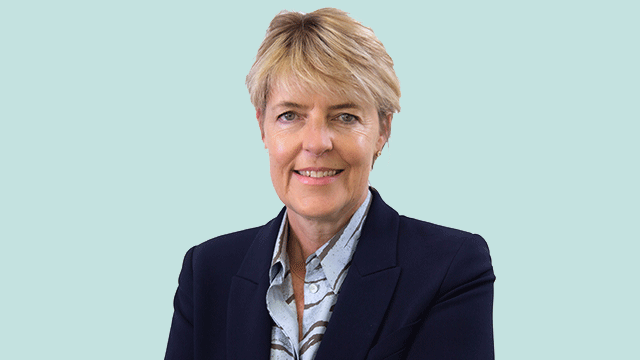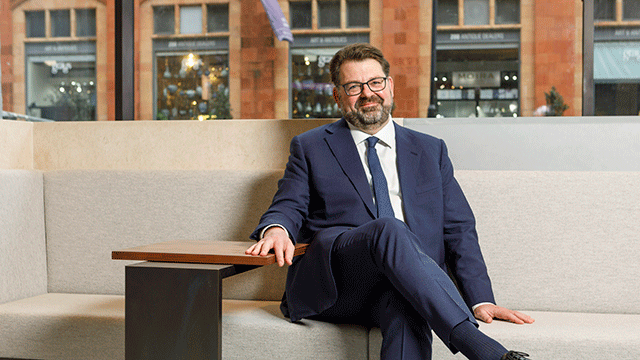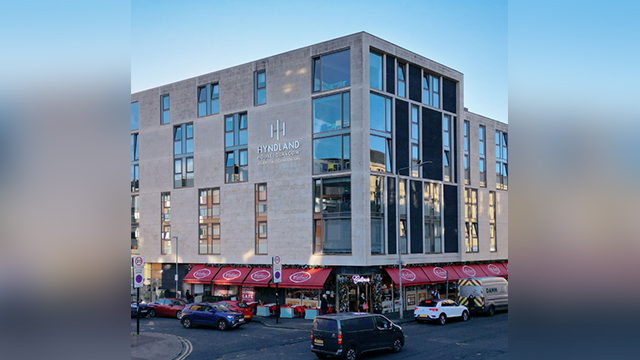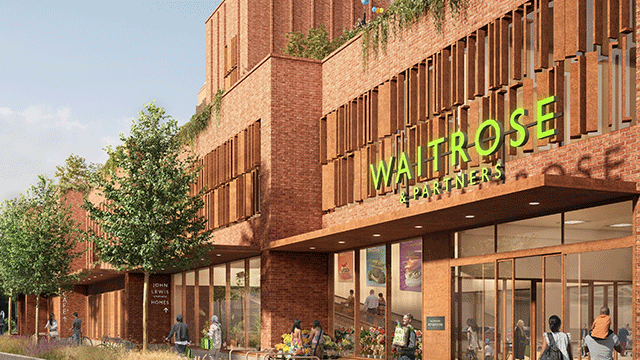A rapidly growing working-age population, an increasingly stable economic outlook and a government committed to infrastructure development and market reform make Indonesia the smart choice for investors looking at South East Asia. Helen Roxburgh reports
 The world’s fourth-most populous nation, and the largest archipelago on the planet, Indonesia is all about variety. From the golden beaches in Lombok to the peaceful Bali temples and the hustle and bustle of Jakarta’s gridlocked streets, there is something for everyone.
The world’s fourth-most populous nation, and the largest archipelago on the planet, Indonesia is all about variety. From the golden beaches in Lombok to the peaceful Bali temples and the hustle and bustle of Jakarta’s gridlocked streets, there is something for everyone.
And the same is true for investors eyeing the region’s real estate sector. After a period of uncertainty, Indonesia’s economy is now growing at a faster rate than China’s. The country is set to see its economy rocket to overtake both Japan’s and Germany’s by 2050, according to PwC. With a rapidly growing nation of young, middle-class workers, Indonesia is ready to take its place on the world stage.
In February this year, Moody’s upgraded its outlook on Indonesia from stable to positive, in a boost for the country’s policymakers. Since sweeping into power in 2014, president Joko Widodo has been hunting for alternative growth engines in Indonesia and seeking modernisation to attract foreign investment. Moody’s upgrade followed a similar move by Fitch in December, and suggests the country is closer to a ratings upgrade, which would allow it to sell government bonds at lower rates and attract more investors.
Ratings agencies should upgrade the country this year. the Rupiah has been stable and the stock market has been strong. That will feed back to real estate
This progress, plus a stabilising economy and strong population growth, is finally calming the nation’s formerly unpredictable property market. As a result, there are opportunities aplenty emerging for those with cash to splash as potential investment plays start to move down the risk curve.
Growth and stability

An average population growth of 1.3% annually over the past decade – larger than regional peers Thailand and Vietnam – is partially responsible for the nation’s more stable outlook. By 2025, Indonesia’s working population is expected to total more than 190m. The country’s annual GDP growth averaged 5.8% over the past 10 years and the PwC World in 2050 report projects that while India, China and the US are on track to be the three largest global economies by 2050, Indonesia could come in fourth place.
Since 2006, Indonesia has been urbanising at a similar rate to China. But while the latter’s urbanisation rate is expected to slow, Indonesia’s shows no such signs: there will be 53m more wealthy, urban residents in the country by 2025, according to the PwC report. The real estate opportunities stem from the fact that, despite this rising middle class, much of the country remains underdeveloped.
Over the past eight years, the Indonesian property market has been on an unpredictable ride. In 2013, a report from PwC and the Urban Land Institute surprised many by placing Jakarta as the top investment prospect in Asia, soaring from 11th place the previous year. But the market didn’t grow quite as expected.
“Booming commodity, oil and gas and stock market prices boosted the property market in Indonesia in the period 2009-2013,” says Hasan Pamudji, head of Indonesia research at Knight Frank. “Then, suddenly, as a result of falling commodity, oil and gas prices, changing property tax regulations, the Jokowi presidential election, a tax amnesty, and cooling measures, property demand slowed significantly from 2014 until today.
“We think that recovery should happen in the second half of 2017, after the local elections are cleared.”
In Java alone there are 120m people – that’s five or six Australias on just one island. And investments being made now will support the economy for years
Large supply means average rents decreased by 3.6% in H1 2016, while the average asking rent for premium grade-A offices fell by 14.7%. With high levels of proposed new supply, occupancy rates and base rental rates are expected to slide further – JLL forecasts a further 11% drop in Jakarta office rents in 2017. Another 2.3m sq m will be built by 2019.
“Cyclically we have been in a relatively slow period of growth, by Indonesia’s recent historical levels, but there is more confidence in the market now,” says Todd Lauchlan, country head for Indonesia at JLL. “Rating agencies should upgrade the country this year. The rupiah has been quite stable, and the stock market has been performing well. A lot of the performance indicators have been strong, and that will feed back to the real estate sector.”
Middle-class aspirations
Indonesia’s changing demographic presents huge long-term opportunities. A massive, upwardly mobile population with the desire to buy their own home has catapulted property markets through dizzying growth. Residential land prices have increased threefold since 2009 in desirable areas. But as the market slows, demand is now highest for mid-range urban homes. The affordable segments of the residential market account for 35.8% of the residential pipeline, meaning supply is unlikely to meet current levels of demand.
Rising spending power and urbanisation have also led to a significant increase in demand for e-commerce and logistics, along with retail demand. A Kantar Worldpanel survey found shoppers in Indonesia were spending 41% more per shopping trip today than in 2013. But location is crucial, with some areas oversupplied, especially as Jakarta’s retail quadrupled between 2003 and 2015. Investors are seeing new potential in suburban malls; in the capital, 16 retail projects are in the pipeline, with almost half outside the city core.
“In terms of growth areas, we see several developers and investors looking at e-commerce and logistics,” says Lachlan. “It’s quite a nascent market, but a lot of private equity and sovereign wealth funds made money in China and Japan, and are looking for the next market. Indonesia is on their radar, and the market demand is strong, while the supply is limited.
“Finally, we are seeing investors looking at suburban retail, often buying interesting malls, and looking to refurbish and renovate.”
The e-commerce market remains immature, but with market demand. In April 2016, Alibaba paid $1bn for a controlling stake in e-commerce start-up Lazada – Indonesia’s number-one online retail platform – citing growth prospects across South East Asia.
Indonesia also has a large manufacturing base driven by the domestic consumer market, another engine of demand for logistics.
Infrastructure upgrade
President Widodo has promised to upgrade Indonesia’s infrastructure, including roads, ports, and power plants. High-profile infrastructure projects include the Jakarta Mass Rapid Transit and the Jakarta-to-Bandung high-speed railway. The 2,500km trans-Sumatra toll road will connect the major cities on Indonesia’s largest self-owned island, while 24 port projects are being redeveloped for either passenger traffic or improved freight capacity.
“New infrastructure development and improving connectivity are the driving forces to keep prices high and sustain sales,” says Pamudji. “Investors are looking for capital gain profits and rental yields in locations with expatriates and university students. International investors are most interested in residential and mixed-use projects located in growth areas along new infrastructures and transport hubs such as the MRT line, Light Rail Transit line and toll roads.”
Some logistics operators have already grabbed the chance to be early players in the market. In April 2016, Singaporean wealth fund GIC entered a partnership with Mega Manunggal Property to develop 500,000 sq m of logistics warehouses in the next three years, saying it was “attracted by the long-term growth of this sector”.
In September, DHL Express announced it was investing $2.2m in a cargo-handling facility at Jakarta’s Soekarno-Hatta International Airport, to add to an existing facility at the airport already operating at full capacity. Japanese logistics firm SG Holdings established its foothold in the archipelago through a delivery and logistics co-operation agreement with Indonesian logistics provider Repex Wahana.
GIC has already been active in Indonesia, signing a $500m investment agreement with one of Indonesia’s largest property companies, Rajawali Group, in 2014. Hot on its heels was a deal between property giant CapitaLand and a subsidiary of Indonesian company Credo Group to develop a $220m integrated development in Jakarta – the companies said the Indonesian property market was “bolstered by sound social and economic fundamentals”.
“Indonesia is still attractive, especially compared [with other countries] across South East Asia,” says Lachlan. “Cambodia, for example, is still in the early stages, and is nothing like as developed as Indonesia. Vietnam has a strong base, but it does not have the diversity or the scale of the economy here.
“Look at Java alone: there are 120m people – that’s five or six Australias on just on one island. It has enormous potential. And a lot of the investments being made now will support the economy for years to come – the money here is looking for long-term, steady investments.”
Not without risk
While there is no doubt there are opportunities emerging, this is not a risk-free market. Challenges to be aware of for overseas interest include possible rapid changes in property and tax regulations, any turbulence caused in local elections this year, oversupply and currency fluctuations.
“Investors and developers looking to enter the market need to be aware that Indonesia lacks transparency and poses unique challenges,” a JLL research report warns.
That aside, for those with the right risk tolerance, Indonesia is showing strong signs of a market on the up. Often seen as a real estate market built by domestic developers, and targeted at domestic buyers, the nation should find no shortage of international interest over the next few years. As long as the government continues market reforms as it has promised, the market should open further to international investment, and help propel Indonesia to its predicted heady heights.
“Indonesia is still perceived as the growth place or investment destination for those international investors who have a long-term view and plan,” says Pamudji.
He adds: “Its fundamentals remain strong because of the large population, growing middle-class income, abundant natural resources, and a strong commitment from the government to accelerate infrastructure projects and connectivity throughout Asia.”
David Cheadle
Managing director, Cushman & Wakefield Indonesia
Indonesia, the largest economy in South East Asia, has a rapidly expanding population that currently stands at around 260m people. With 60% of this total at working age, the country has a youthful vibe and its people readily embrace technology trends – Indonesia is a nation that tweets as much as it eats.
Since his election in 2014, president Joko Widodo has made developing Indonesia’s infrastructure and encouraging private sector investment the top priorities for his government. The downturn in global commodity prices has also led the government to roll back costly subsidies and create some impetus to diversify its economy.
On current trends, Indonesia has the potential to become the seventh-largest economy in the world if it can navigate a range of constraints on growth and fully leverage South East Asia’s positive economic synergies. However, potential investors will need to undertake robust due-diligence investigations. Partnering local players in co-investments remains a viable route to negotiate emerging market risk and gain access to the local deal network.
With a burgeoning middle class, developments that cater to sectors that complement such a demographic – including financial services/insurance, retail and healthcare – remain compelling. High demand for logistics facilities also exists, as a result of the nation’s sprawling archipelagic features. Twenty years in the planning, construction of Jakarta’s MRT project is finally progressing, with operations expected to commence in 2018. This continued development of the city’s infrastructure will also sustain interest in transit-oriented projects.
The combination of economic and investment reforms, infrastructure spending and a robust macro-economic outlook makes Indonesia an attractive investment destination.
Tax incentives
The Indonesian government has provided generous tax incentives to make its property sector as attractive as possible to local and foreign investors. It is also attempting to optimise the current licensing system.
New tax incentives were launched under the 11th Policy Package, followed by implementing regulations for the sale of property through Indonesian real estate investment trusts. Previously, Indonesian REITs were considered unattractive due to high tax rates. Now, income tax over land or building transfers has been reduced from 5% to 0.5%. Additionally the 5% gross income tax imposed on non-REIT transfers of land or buildings has been reduced to 2.5%. Policies will also be introduced to encourage listing domestic REITs.
Since Indonesia has historically ranked low on the ease of doing business rankings, the government, through its 12th Policy Package, plans to simplify procedures, reduce costs and reduce the time required to apply and receive licences and permits in the real estate sector. Prior to the issuance of this package, 17 procedures were identified which took an average of 210 days to obtain relevant permits. The government aims to simplify the process to 14 procedures with an average of 52 days.
The government has issued regulations which allow foreign nationals with valid residential permits to directly acquire residential leases for a maximum term of 80 years for properties over the minimum price threshold* to prevent housing bubbles and to prevent lower income Indonesians from being priced out of the market. Note that the property must be purchased directly from a developer or from the landowner.
These new policies and regulations have attracted property developers from Korea, China, Japan and Singapore, according to a recent announcement issued by the Indonesian Investment Coordinating Board.
*This is variable depending upon regions and types of residential properties and is between 750m and 10bn rupiah. Thresholds are the highest in the city of Jakarta.
By Karina Antonio (senior associate) and Triangga Kamal (associate), Dewi Negara Fachri & Partners, Indonesia (in association with Hogan Lovells)












